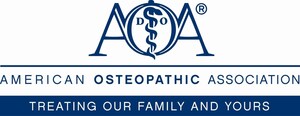PHILADELPHIA, Oct. 9, 2017 /PRNewswire-USNewswire/ -- A telemedical drone system with holographic technology can quickly put emergency physicians and lifesaving medical supplies in the hands of disaster survivors. The Telemedical Drone Project, known as HiRO (Health Integrated Rescue Operations), was presented Monday at OMED 17 in Philadelphia, the nation's largest conference for osteopathic physicians.
This latest version of the HiRO drone is currently being tested to support the Mississippi Department of Emergency Management, Homeland Security, the National Guard and NATO. It is expected to be production-ready in early 2018. Italo Subbarao, DO, senior associate dean at William Carey University College of Osteopathic Medicine and Guy Paul Cooper Jr., DO, developed the telemedicine system after studying the medical response to an EF-4 tornado that struck Hattiesburg, Mississippi in February 2013.
"Recent catastrophic events illustrate the challenges of getting life-saving treatment to disaster victims, particularly when first responders can't get there quickly by ground," said Dr. Subbarao, a disaster medicine expert and emergency medicine physician. "Our goal, as osteopathic physicians, is to bridge that delay by delivering rapid treatment directly to the victims, using remote physicians to instruct anyone on site."
The HiRO drone and telemedical kit includes breakthrough advancements:
- An augmented reality interface that operates on a Microsoft HoloLens headset, which gives a remote physician the ability to treat multiple victims.
- An automated medication bin that allows the remote physician to unlock specific compartments. This lets bystanders safely access medications and equipment, supported by video guidance from the doctor.
- An integrated holographic electronic health record system display, which helps the remote physician monitor multiple patients in the field.
"We focused on making sure our interface and medical kits are intuitive for both the remote physician and the person at the scene. Safety and simplicity are top priorities because we're working to saves lives in very high stress situations," said Dr. Cooper. "The HiRO telemedical drone provides immediate access to a physician through a wireless video connection. When the portable critical care kit arrives, the doctor appears on a touchscreen display to direct medical treatment."
The kit includes smart glasses, which allow a person at the scene to move away from the kit while maintaining audio and visual contact with the physician. Holographic technology lets the physician to see the disaster scene and direct care through a hands-free, motion-enabled augmented reality headset.
Drs. Subbarao and Cooper partnered with Dennis Lott, director of the local unmanned aerial vehicle program at Hinds Community College in Mississippi, to design and build a next generation disaster drone to carry the telemedical packages. That drone is currently being field tested.
"These drones have impressive lift and distance capability, and can be outfitted with a variety of sensors, such as infrared, to help locate victims," Lott said. "It is just a matter of time before the drones become part of routine life."
About the American Osteopathic Association
The American Osteopathic Association (AOA) represents nearly 130,000 osteopathic physicians (DOs) and osteopathic medical students; promotes public health; encourages scientific research; serves as the primary certifying body for DOs; and is the accrediting agency for osteopathic medical schools.
SOURCE American Osteopathic Association
WANT YOUR COMPANY'S NEWS FEATURED ON PRNEWSWIRE.COM?
Newsrooms &
Influencers
Digital Media
Outlets
Journalists
Opted In






Share this article